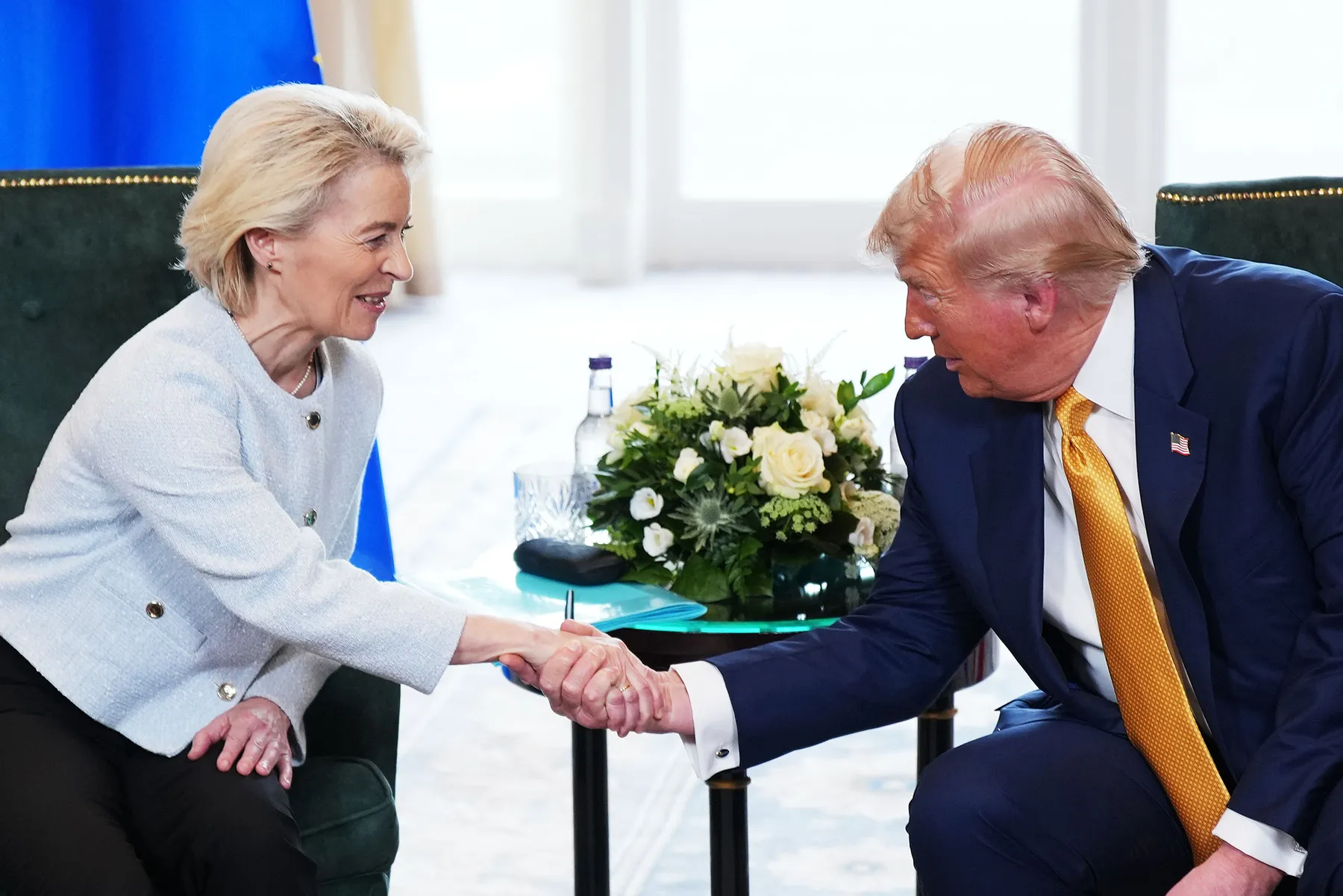The European Union and the United States have announced a political agreement that promises to radically reshape the €1.7 trillion transatlantic trade relationship. At first glance, it seems like a compromise, but in many European capitals it has been perceived as a forced concession under pressure from President Donald Trump.
A New Reality: 15% Tariff on European Exports
The essence of the deal is this: the EU agreed to a 15% flat tariff on most of its exports to the US. In return, tariffs on American goods entering the EU are expected to drop — to below the current average of around 1%. However, the EU will not implement this part of the deal until a legally binding agreement is finalized.
According to EU Trade Commissioner Maroš Šefčovič, this was “the best deal we could get under very difficult circumstances.”
The deal was struck amid efforts by EU leaders to keep Trump committed to NATO — a critical element of European security — and shortly after he threatened to impose tariffs of up to 200% on European goods, from cars to steel.
What Was Actually Signed by Trump and von der Leyen?
In reality, there is no finalized deal yet. The joint announcement made on July 27 by Trump and European Commission President Ursula von der Leyen is merely a political declaration with no legal force. A more detailed joint statement is expected by August 1, but that too will be non-binding. Only after that will real negotiations begin for a legally enforceable agreement, which could take months to finalize.
Nevertheless, beginning August 1, the US will begin imposing the 15% tariff on the majority of EU exports — amounting to roughly €380 billion ($435 billion), or 70% of the EU’s total exports to the US.
Who’s the Winner — the US or the EU?
According to Bloomberg, the terms of the deal clearly favor Washington. US industries will gain a competitive edge as European exports become more expensive. In Europe, there is concern that this will weaken demand for EU goods and drive companies to shift production to the US — simply to avoid tariffs.
French President Emmanuel Macron commented:
“To be free, you have to be feared. We have not been feared enough.”
French Prime Minister François Bayrou was even more blunt:
“It’s a dark day when an alliance of free peoples, united to affirm their values and defend their interests, resolves to submission.”
The market responded swiftly: the euro fell to a five-week low of $1.1527, down 1.8% since the trade deal was announced.
Why Did the EU Agree to This?
The EU’s motivation was not just economic. The negotiations had serious geopolitical and energy-related implications. Amid the war in Ukraine and years of underinvestment in defense, Europe remains critically dependent on the US for its security. The phase-out of Russian gas has also left Europe in need of alternative energy sources, primarily American.
In this light, the deal was seen as the price of maintaining strategic partnership with Washington.
Automakers Hit Hard — Especially Germany
One key sector affected is automobiles and auto parts, now subject to a 15% tariff. While this is lower than the 27.5% Trump previously imposed, it is still a heavy blow. Meanwhile, US-made cars will be allowed into the EU tariff-free.
For Germany — which exported $34.9 billion in cars and parts to the US in 2024 — the damage is significant.
Wolfgang Niedermark, executive board member of Germany’s industrial federation BDI, called the deal
“an inadequate compromise” that sends a disastrous signal.
“Even a 15% tariff will have immense negative consequences for Germany’s export-oriented industry,” he warned.
Energy and Investment Promises: Lofty Words, Little Certainty
One of the more controversial parts of the Trump–von der Leyen announcement is the EU’s pledge to purchase $750 billion worth of US liquefied natural gas, oil, and nuclear energy products over three years. The EU also stated that companies within the bloc have “expressed interest” in investing at least $600 billion in various US sectors.
But as Bloomberg notes, actual US energy exports to Europe were under $80 billion in 2024 — far below the promised figure. Moreover, the EU does not centrally purchase energy and cannot mandate where private companies buy it from.
The $600 billion investment figure is also problematic. It represents non-binding pledges from individual companies, not a commitment from the EU itself. As one EU official clarified,
“The EU cannot promise or guarantee such sums — these are private initiatives.”
This article was prepared based on materials published by Bloomberg. The author does not claim authorship of the original text but presents their interpretation of the content for informational purposes.
The original article can be found at the following link: Bloomberg.
All rights to the original text belong to The Bloomberg.


















